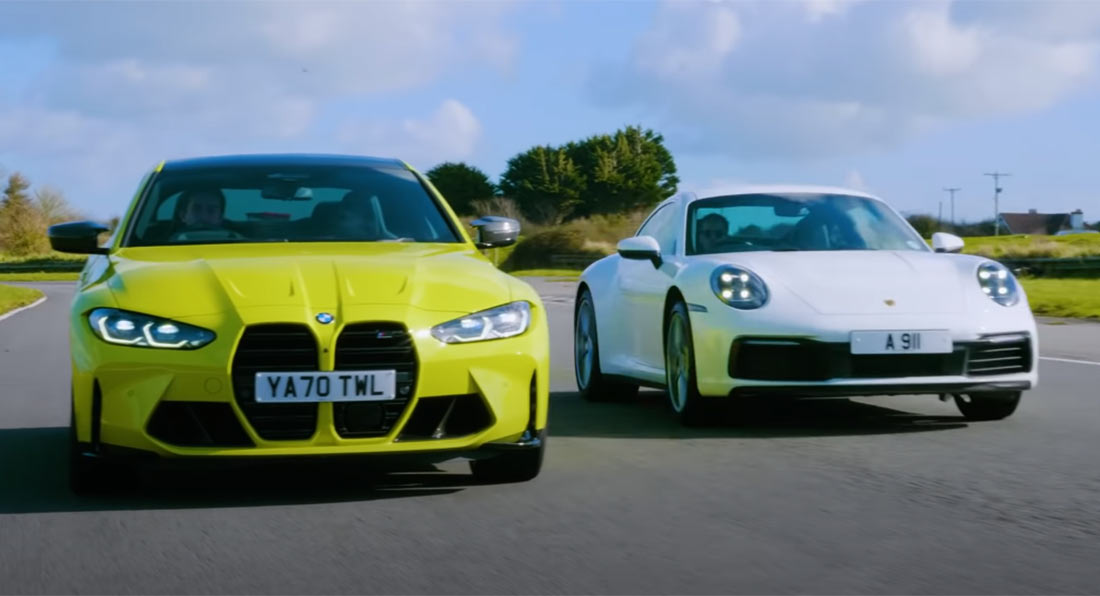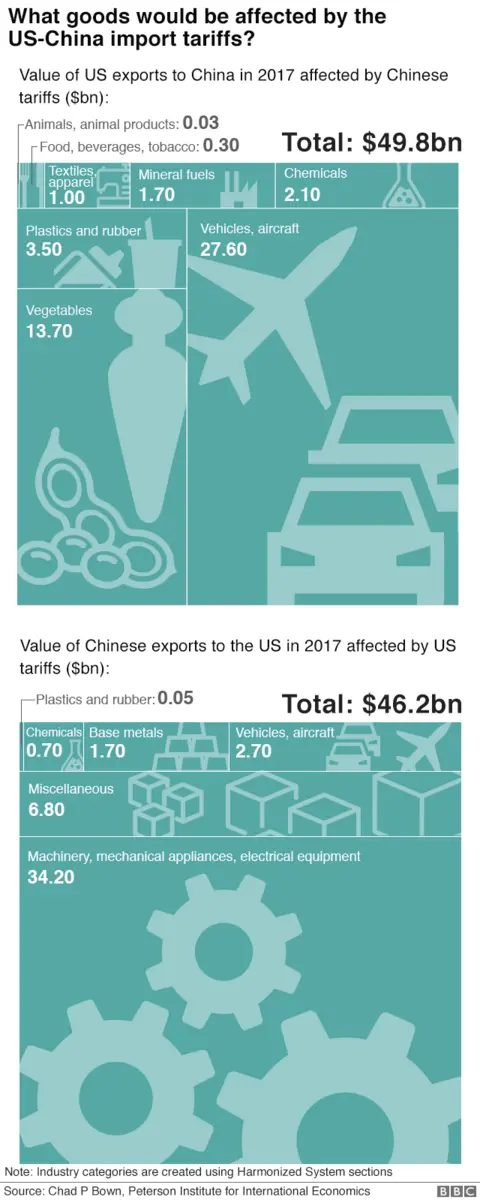Navigating The China Market: Challenges Faced By BMW, Porsche, And Competitors

Table of Contents
Intense Competition from Domestic Brands
The Chinese automotive industry has experienced explosive growth in recent years, with domestic brands rapidly gaining market share. This intense competition poses a significant threat to established luxury players like BMW and Porsche. Chinese automakers are not only aggressively expanding their product lines but are also focusing heavily on electric vehicles (NEVs), a segment experiencing phenomenal growth in China. This aggressive expansion is fueled by significant government support and investment in the NEV sector.
- Rising popularity of Chinese electric vehicle brands like BYD, NIO, and Xpeng: These companies are producing high-quality, technologically advanced EVs, often at more competitive price points than their foreign counterparts.
- Aggressive pricing strategies from domestic brands, squeezing profit margins for foreign competitors: The price wars are intensifying, forcing luxury brands to re-evaluate their pricing models and strategies.
- Increasing consumer preference for domestic brands due to national pride and improved quality: A growing sense of national pride is driving demand for homegrown brands, particularly amongst younger consumers.
- The challenge of building brand loyalty in a rapidly evolving market: In a market characterized by rapid innovation and change, establishing and maintaining lasting brand loyalty is a major challenge.
Navigating Complex Regulatory and Legal Environments
China's regulatory landscape for the automotive industry is notoriously complex, presenting significant hurdles for foreign automakers. These complexities add substantial costs and challenges to market entry and ongoing operations.
- High import tariffs impacting profitability: These tariffs significantly increase the cost of importing vehicles, reducing profit margins.
- Stringent emission standards pushing for faster adoption of electric vehicles: China is a global leader in pushing for stricter emission standards, necessitating significant investment in NEV technology.
- Localization requirements demanding significant investment in local production and supply chains: Foreign companies are often required to establish local production facilities and supply chains, demanding substantial capital investment.
- The need for expert legal counsel to navigate the complexities of Chinese law: Understanding and complying with Chinese regulations requires specialist legal expertise.
Understanding and Adapting to Unique Consumer Preferences
Understanding Chinese consumer preferences in the luxury car segment is paramount to success. These preferences are evolving rapidly, particularly among younger generations, demanding a nuanced and adaptive approach to marketing and customer service.
- The growing importance of digital marketing and online sales channels: Reaching the digitally savvy Chinese consumer requires a strong online presence and effective digital marketing strategies.
- The need for tailored marketing strategies to resonate with specific demographic segments: Marketing campaigns must be customized to appeal to different age groups and socioeconomic backgrounds.
- The significance of providing exceptional customer service and after-sales support: Building trust and loyalty requires a commitment to excellent customer service, including comprehensive after-sales support.
- Understanding the evolving preferences of younger, tech-savvy consumers: Catering to the desires of tech-savvy younger generations is crucial for long-term growth.
Supply Chain Disruptions and Logistics Challenges
Managing global supply chains within the context of the Chinese market presents numerous logistical hurdles. Geopolitical events, trade tensions, and unforeseen disruptions can significantly impact the automotive industry.
- Potential for disruptions to global supply chains due to geopolitical risks: The interconnectedness of global supply chains makes them vulnerable to geopolitical instability.
- Challenges associated with sourcing components and raw materials in China: Securing reliable sources for components and materials can be complex and challenging.
- The need for efficient and reliable logistics networks to manage inventory and distribution: Effectively managing inventory and distribution requires a robust and reliable logistics network.
- The impact of fluctuating exchange rates on profitability: Currency fluctuations can significantly affect the profitability of automotive operations.
The Rise of Electric Vehicles (NEVs)
The Chinese NEV market is booming, presenting both significant opportunities and challenges for luxury automakers. Government incentives and policies are driving the rapid adoption of electric vehicles, forcing companies to invest heavily in this sector.
- Government incentives and policies pushing for greater adoption of electric vehicles: Government support is a major driver of the NEV market's growth.
- The need to invest heavily in R&D and production of electric vehicles: Significant investment in R&D and production capabilities is essential for remaining competitive.
- The development of charging infrastructure to support the growing number of electric vehicles: The expansion of charging infrastructure is critical for supporting the increasing number of EVs on the road.
- Competition from Chinese NEV manufacturers with advanced technology: Chinese NEV manufacturers are rapidly innovating and developing advanced technologies, posing a strong competitive threat.
Conclusion
Successfully navigating the China market demands a deep understanding of its multifaceted challenges. From intense domestic competition and intricate regulations to unique consumer preferences and the rapid rise of electric vehicles, luxury automakers face a dynamic and demanding environment. To thrive in this lucrative yet complex market, companies like BMW and Porsche must embrace localization, invest strategically in technological innovation, and cultivate strong relationships with Chinese consumers. Learn more about successfully entering and competing in the challenging yet rewarding China market – the future of the global automotive industry is inextricably linked to its success in this vital market.

Featured Posts
-
 Anchor Brewing Companys Closure Impact On The Craft Beer Industry After 127 Years
Apr 22, 2025
Anchor Brewing Companys Closure Impact On The Craft Beer Industry After 127 Years
Apr 22, 2025 -
 Ftc Appeals Activision Blizzard Acquisition Microsoft Deal In Jeopardy
Apr 22, 2025
Ftc Appeals Activision Blizzard Acquisition Microsoft Deal In Jeopardy
Apr 22, 2025 -
 How Tariffs Threaten Chinas Export Led Growth Model
Apr 22, 2025
How Tariffs Threaten Chinas Export Led Growth Model
Apr 22, 2025 -
 T Mobiles 16 Million Data Breach Fine Three Years Of Security Failures
Apr 22, 2025
T Mobiles 16 Million Data Breach Fine Three Years Of Security Failures
Apr 22, 2025 -
 Is Americas Financial Primacy Vulnerable After Trumps Trade Actions
Apr 22, 2025
Is Americas Financial Primacy Vulnerable After Trumps Trade Actions
Apr 22, 2025
Latest Posts
-
 9 Players With A Shot At Breaking Alex Ovechkins Nhl Goal Record
May 10, 2025
9 Players With A Shot At Breaking Alex Ovechkins Nhl Goal Record
May 10, 2025 -
 Will Leon Draisaitl Play In The Oilers Playoffs Injury Update
May 10, 2025
Will Leon Draisaitl Play In The Oilers Playoffs Injury Update
May 10, 2025 -
 Can Anyone Break Ovechkins Nhl Goal Record 9 Potential Candidates
May 10, 2025
Can Anyone Break Ovechkins Nhl Goal Record 9 Potential Candidates
May 10, 2025 -
 Nhl Playoffs Game 1 Oilers Vs Kings Predictions Picks And Best Bets
May 10, 2025
Nhl Playoffs Game 1 Oilers Vs Kings Predictions Picks And Best Bets
May 10, 2025 -
 Oilers Vs Kings Expert Predictions For Game 1 Of The Nhl Playoffs
May 10, 2025
Oilers Vs Kings Expert Predictions For Game 1 Of The Nhl Playoffs
May 10, 2025
